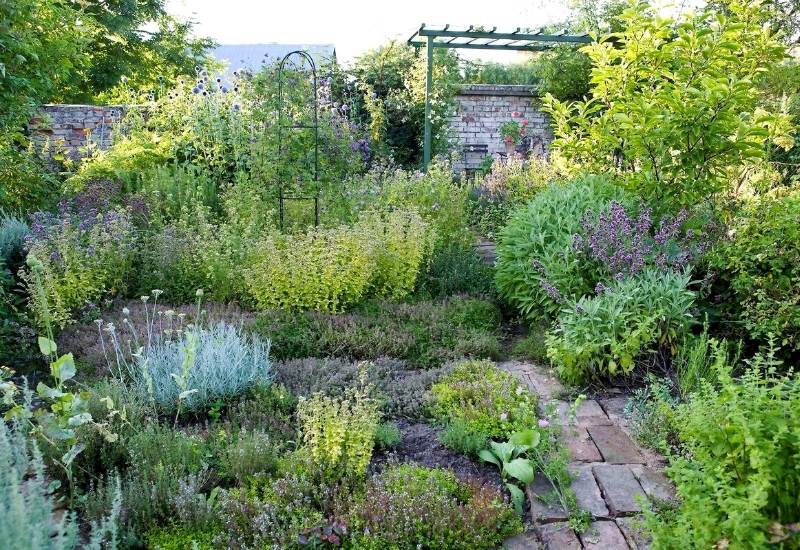
Although most popular garden herbs need full sun and heat to thrive, there are a number of underrated shade tolerant herbs that will grow in those shady spots in your garden that doesn’t get more than 3 or 4 hours of sun daily.
Herbs that can handle partial shade are often the ones that prefer moist, cool soil conditions, or are harvested primarily for their roots or leaves.
Although some are popular culinary herbs, there are many lesser known but equally useful herbs on this list that we think deserve more attention!
Here are our top 15 favorite shade tolerant herbs, the best way to grow them, and some hot tips to keep your shade garden luscious!
Full Sun vs Shade Tolerant: Pay Attention To Sunlight Exposure In your Garden
Before we dive into our list, let’s define the two most common terms used to describe the light preference of herbs:
Full sun
Implies that the herb in question requires at least 6 hours of sunlight per day to grow.
In the summer months when days are long, it is possible to plant full sun herbs in a spot that receives shade in the morning or afternoon, as long as they are still getting those 6 hours at some point in the day.
However for the rest of the year, these herbs won’t be happy in the shade and may begin to wither and die.
Shade tolerant
Means that the herb can tolerate partial shade, but still needs a few hours of sunlight (2-4 hours) to be happy.
Many shade tolerant herbs will prefer full sun and may be leggy or slightly less productive in the shade, but won’t have any major issues.
On the flipside, some of them will actually prefer partial shade and be stressed when planted in full sun.
Either way, the herbs listed below are good options for a garden with shade.
15 Shade Tolerant Herbs That Will Thrive In The Shady Spots Of Your Garden
So which herbs meet the criteria for being shade tolerant? Here are 15 of the best herbs that will do just fine when grown in partial shade.
1. Mint
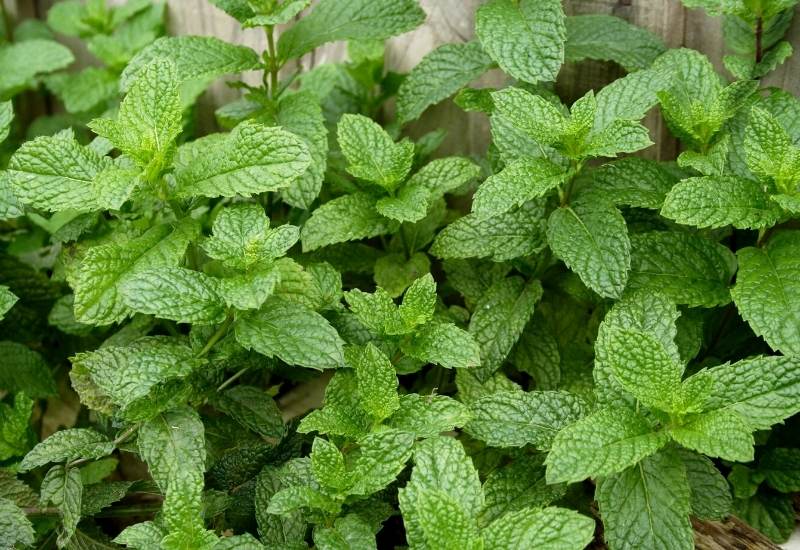
Mint is a vigorous grower in even the poorest of conditions, and is happy to grow and reproduce rapidly in shady areas.
As long as it gets a few hours of sunlight per day it will be happy, and in fact it might begin to take over shaded areas of your garden.
There are many varieties of mint that can be grown (spearmint, peppermint, chocolate mint), so this herb offers many diverse options for shaded gardens.
2. Cilantro
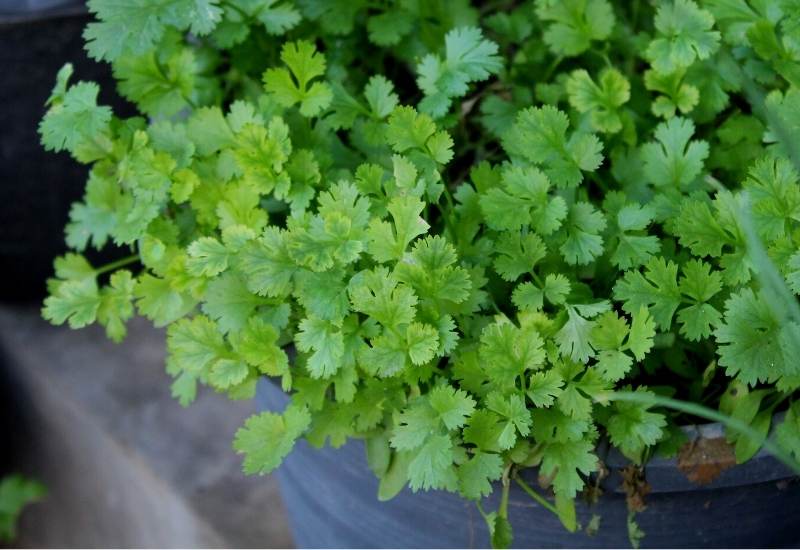
Cilantro is shade tolerant herb but definitely appreciates as much sun as it can get, so plant it in the sunniest of your shaded spots where it gets at least 4-5 hours of sun per day.
The plants have quite a short harvest season, and are sensitive to bolting when temperatures are too high, so some light shade may actually help delay this process.
Either way, you should plant cilantro seeds every few weeks through the summer to stagger your harvest.
3. Lemon Verbena
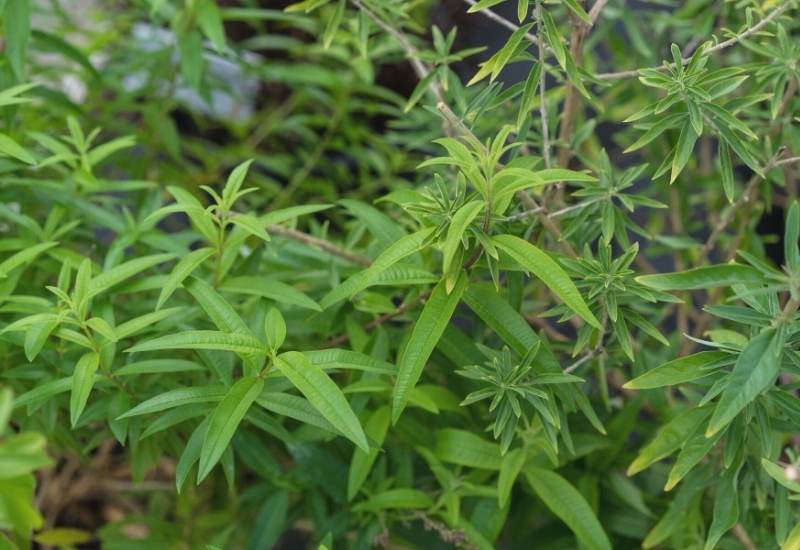
Lemon verbena is a fragrant perennial bush that is attractive to pollinators and unattractive to mosquitoes and flies (awesome, right?), but should be planted in a container in cold-weather regions where temperatures drop below freezing.
The container can be placed in a partially shaded spot of your garden, but lemon verbena should get at least 4-5 hours of sun per day. The bush can grow up to six feet and grows well as a companion to other herbs.
4. Bay Laurel
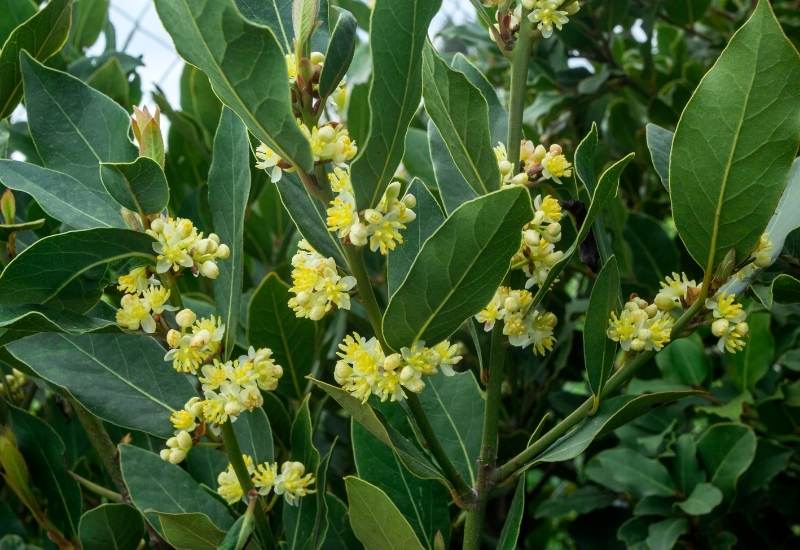
A perennial tree that is often pruned to shrub height, bay laurel will do just fine in a partially shaded spot.
If you live in a temperate climate where winters drop below freezing, plant in a container that can be brought indoors for the winter.
Note that bay leaves are toxic to many animals (but not humans), so keep pets away from it.
5. Dill
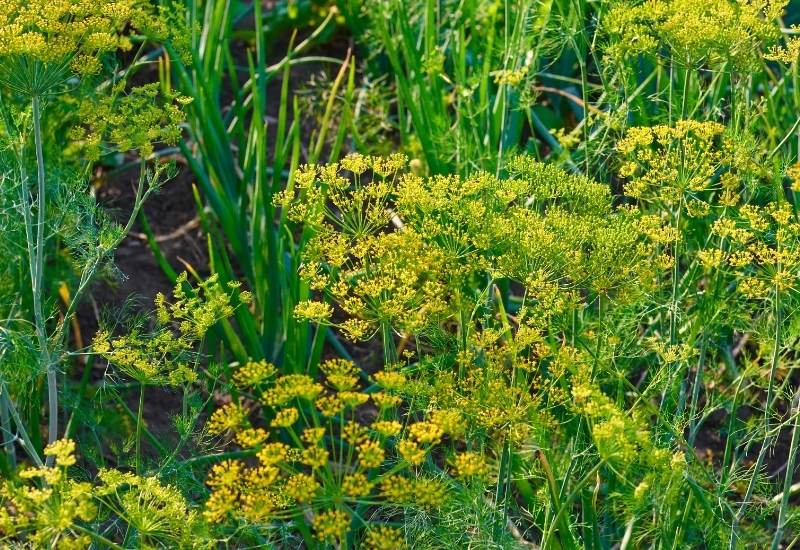
Dill is a low-maintenance biennial herb that is grown as an annual in temperate climates.
It can tolerate partial shade and benefits from some wind shelter, so plant in a spot that is shaded by something that can double as a wind barrier, like a low wall.
It has a fragile root system so weed by hand and never use a hoe or similar tool around the base of this herb. It is a natural pest deterrent, and is a great companion plant for any Brassicas.
6. Parsley
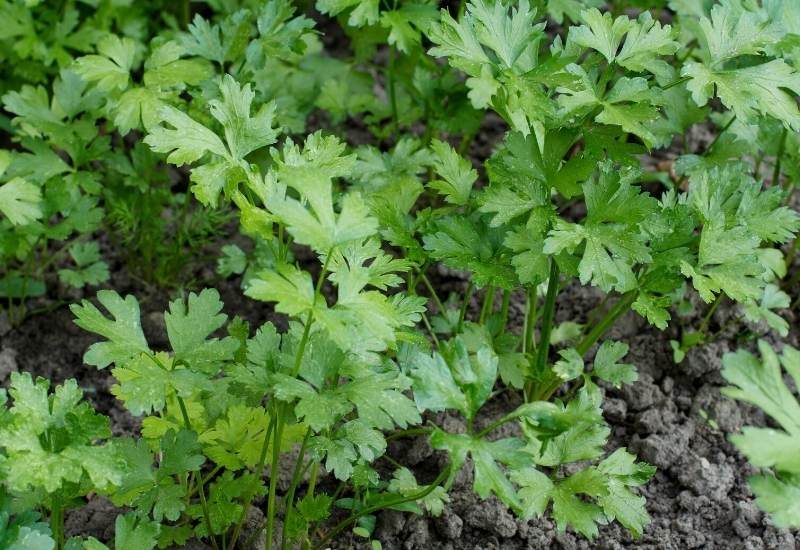
Parsley is another biennial herb that is often grown as an annual, and the two most commonly grown varieties are curly and flat-leaf, each with distinctly different leaf shapes.
Parsley grows best in the cooler seasons of spring and autumn, as it often becomes stressed and bolts in high temperatures.
This makes parsley well suited to being planted in a spot that receives afternoon shade, where the harvest can be extended into the hotter summer months.
7. Tarragon
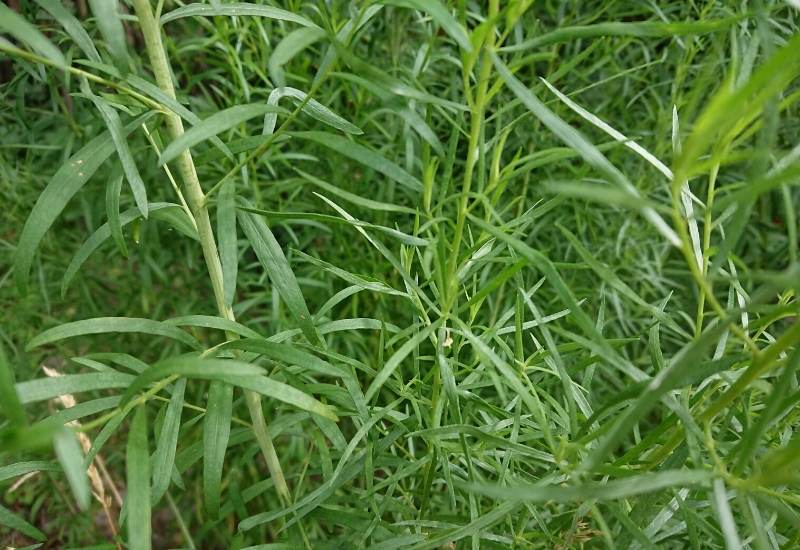
A perennial herb, tarragon needs at least 4-5 hours of sun per day but can handle some light summertime shade.
It is easily maintained and the leaves have a rich flavor with hints of anise. French Tarragon is more popular for culinary uses, but Russian Tarragon is hardier in cold climates.
8. Sorrel
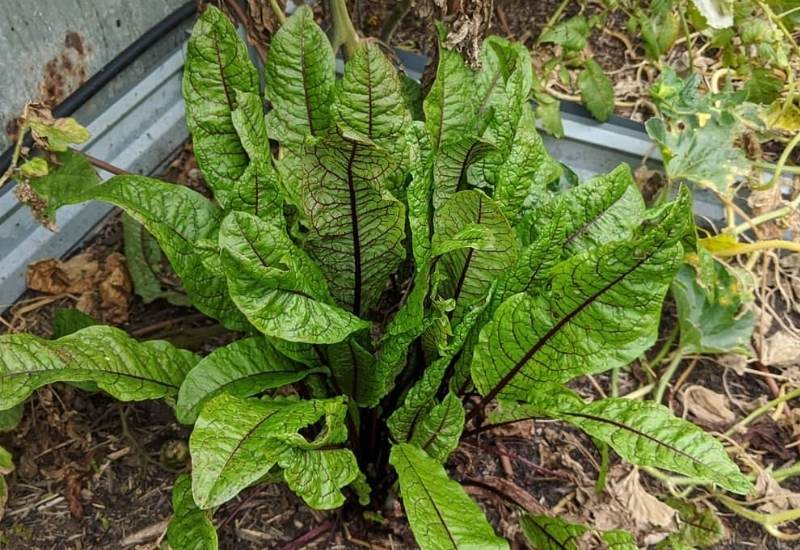
Sorrel is a multi-functional perennial that can be eaten as a salad green or used as a herb once leaves are older.
Like many other leafy greens, sorrel is shade tolerant and its young leaves have a similar flavor to spinach. Mature plants will die back in the winter but pop up again every spring.
9. Valerian
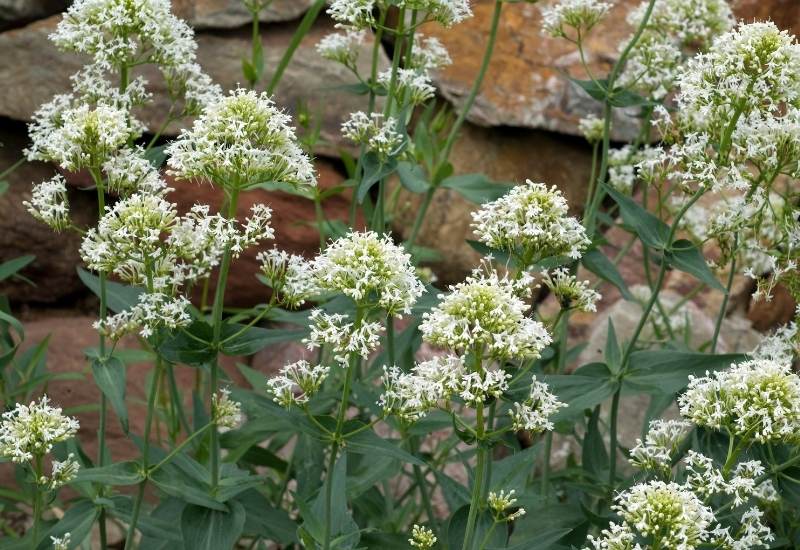
Valerian is a perennial flower and herb whose root is popularly used in teas as a sleep-aid. The more sun the better, but valerian will still grow well with a few hours of shade per day.
It is a great way to bring butterflies and other pollinators to the more shaded areas of your garden, as the flowers attract certain species of flies that butterflies will feed on.
10. Chervil
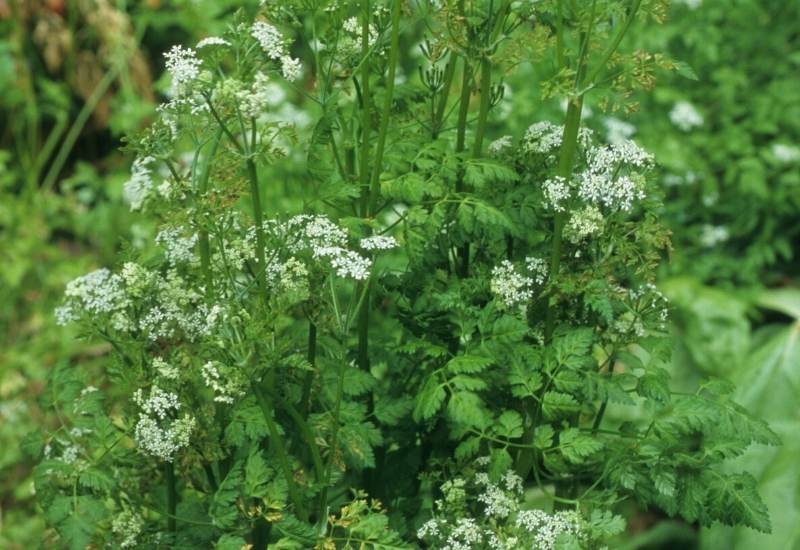
Chervil, a cousin of parsley that is sometimes referred to as French Parsley, is a biennial herb (usually grown as an annual) that grows well in partial shade.
It likes cooler temperatures and is one of the few herbs that actually prefers partially shaded growing conditions and will not thrive in full sun. It is highly nutritious and has many culinary uses.
11. Lovage
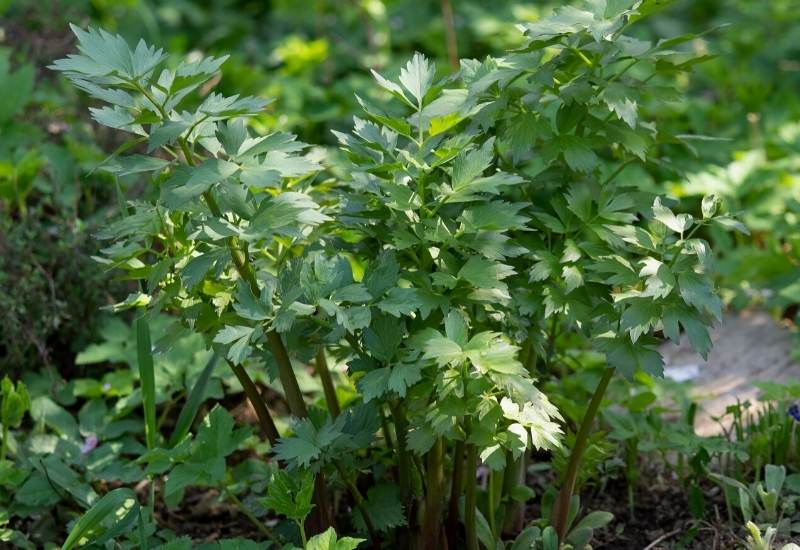
Lovage is a highly functional addition to your shaded herb garden, with many edible parts, ornamental flowers, and multiple medicinal qualities.
It is a perennial that prefers cooler conditions, similar to chervil, and likes partial shade. The leaves have a slight citrus flavor and the flowers have bright yellow blooms that add a pop to your garden in the middle of summer.
12. Catnip
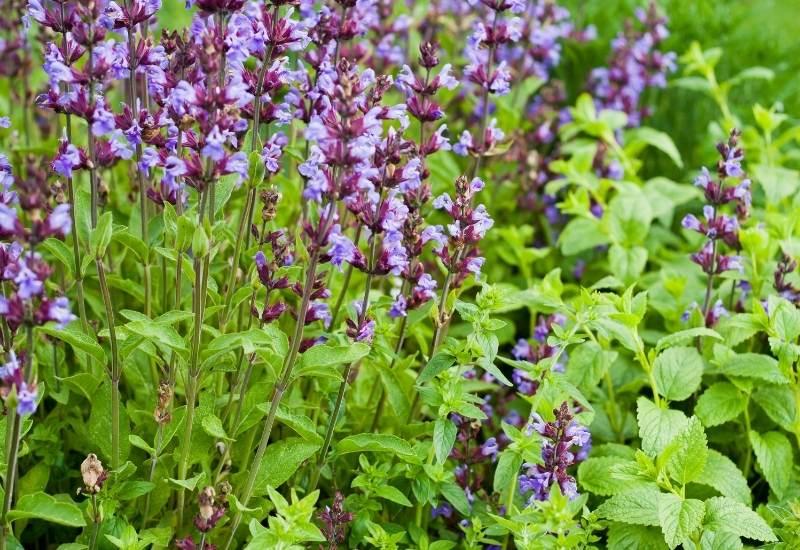
Catnip is another perennial herb in the mint family that likes the partially shaded, moist areas of your garden.
True to its name, it is beloved by felines and they will often roll around the plants so if you do have cats or strays around take care to space it a little further from other plants to avoid damage. Catnip is also commonly used as an ingredient in tea mixes.
13. Chamomile
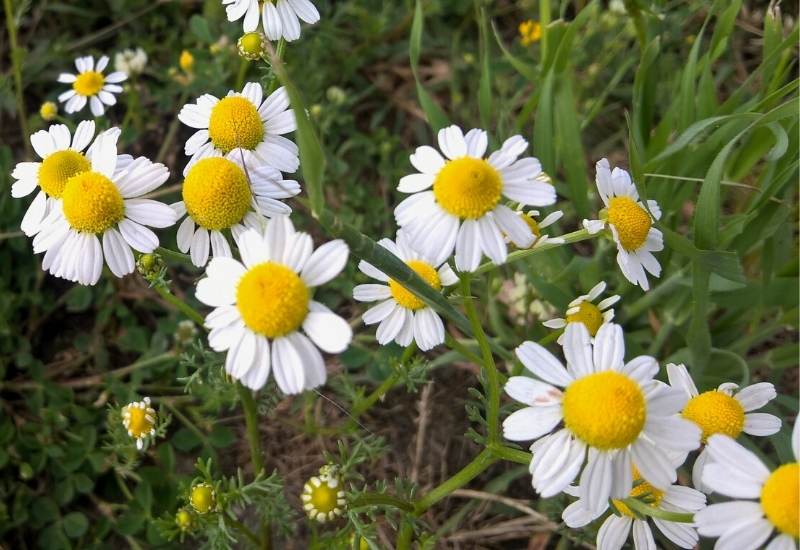
German chamomile is an annual and Russian chamomile is a perennial, and both are shade-tolerant members of the daisy family.
Their flowers closely resemble large daisies, and are often the most utilized part of the plant for making calming tea infusions.
Plants should receive at least 4-5 hours of sun per day but are fine with some morning or afternoon shade.
14. Herb Fennel
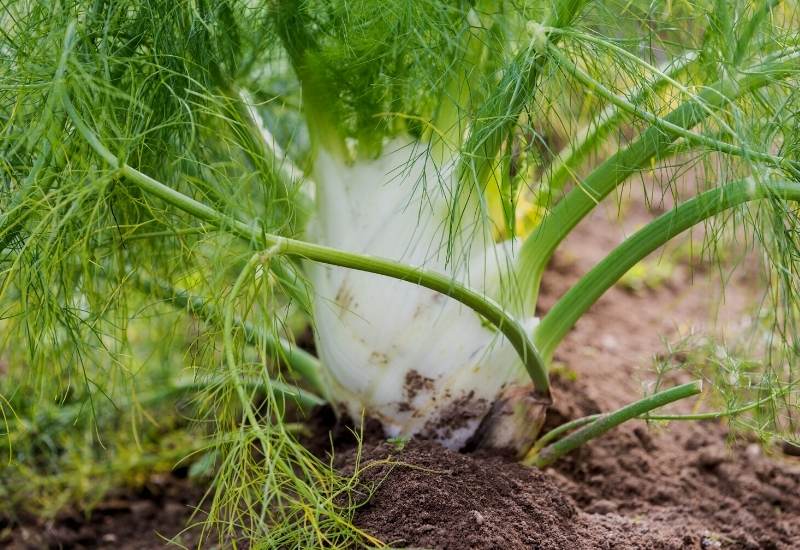
Herb fennel is a perennial grown for its fragrant feathery leaves, and is tolerant to suboptimal, shady conditions.
Be careful not to confuse it with bulb fennel, which is a different variant of the same species that is grown for its underground bulbous root, and has less flavorful leaves.
It is a cousin of dill but they should be kept away from each other to avoid cross-pollination, so just choose one of the two for your shade garden.
15. Hyssop
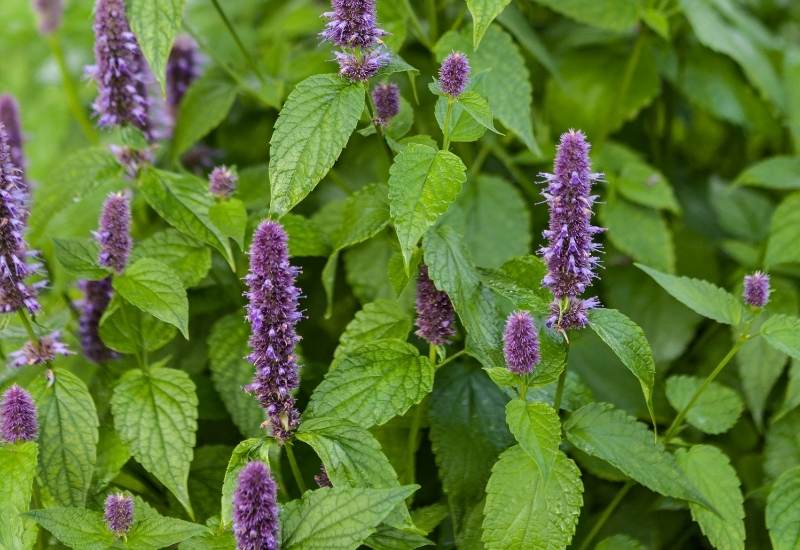
Hyssop is a perennial in the mint family with tall, candle shaped purple flowers. It prefers full sun but will tolerate partial shade, and is another great herb for pollinators that will bring bees and butterflies into your garden.
Both the flowers and leaves have medicinal and culinary uses, and it has been used as a remedy for intestinal and respiratory issues for centuries.
5 Tips for Growing Herbs in the Shade
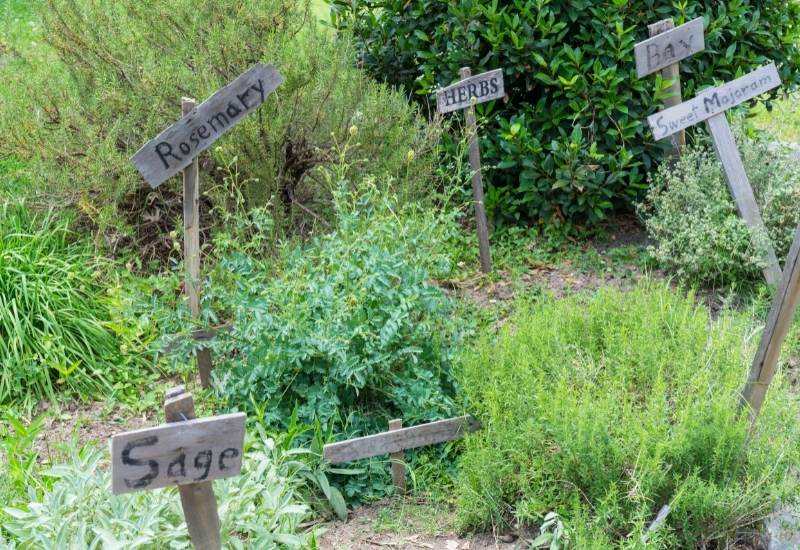
Although there are a number of shade-tolerant herbs you can grow, it’s important to keep certain considerations in mind to help them thrive, especially if you are new to shade gardening. Here are some important tips to remember:
1: Always make sure to select shade-tolerant herbs
As you can see from the list above, there are a number of herbs that will grow well and tolerate shaded conditions.
However there are plenty that are quite the opposite and need full sun to operate, like rosemary and thyme, and they will perish in your shade garden. Don’t make assumptions, and always do your research before planting.
2: Make sure there is still good airflow in shady spots
Sometimes the shadier parts of the garden will be a result of walled-in areas or the location of large trees and bushes blocking out sunlight.
Plant herbs a little further apart from each other in spots like this, where airflow may already be reduced, and make sure to prune away unnecessary foliage when plants become crowded.
Most herbs need good circulation to avoid the development of too-humid conditions and fungal diseases.
3: Ensure that shaded spots still have rich soil.
Since shaded herbs are already lacking in sunlight, it is important that the soil has all the nutrition they need to grow well.
A few of the herbs on this list are tolerant of poor soil conditions, but most will enjoy being planted somewhere that has been amended with compost or broken-down manure.
Very few herbs grow well in clay soil, especially in shady conditions, so if your soil is clay-based amend it with perlite, pumice, horticultural sand, and coco coir to improve drainage, or plant in pots.
4: Prune and harvest from bushy herbs or shrubs to let more light in
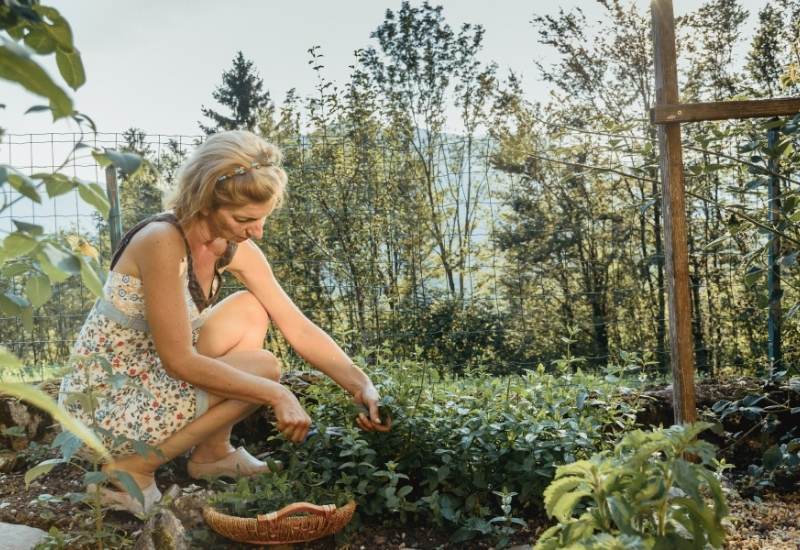
Since some of these shade-tolerant herbs can become super bushy and shrub-like, they will benefit from extra pruning to free up space and create entrances for the available sunlight to penetrate through to different leaf layers.
This is especially true if growing a low-growing herb next to a tall one, to prevent shading the smaller plant even more. The best part is that you can use and eat the pruned leaves!
5: Adapt your irrigation schedules for herbs in the shade.
The herbs on this list are a mix of moisture-loving and drought tolerant, and both preferences are affected in the shade.
Less direct sunlight means less evaporation, so depending on the ambient outdoor temperature, you will need to adjust your irrigation schedule.
Begin by watering your herbs less than would normally, and then increase only if you feel it is needed.
This will prevent accidentally creating boggy soil conditions, which is a common downfall in shade gardens.

Written By
Amber Noyes
Amber Noyes was born and raised in a suburban California town, San Mateo. She holds a master’s degree in horticulture from the University of California as well as a BS in Biology from the University of San Francisco. With experience working on an organic farm, water conservation research, farmers’ markets, and plant nursery, she understands what makes plants thrive and how we can better understand the connection between microclimate and plant health. When she’s not on the land, Amber loves informing people of new ideas/things related to gardening, especially organic gardening, houseplants, and growing plants in a small space.
